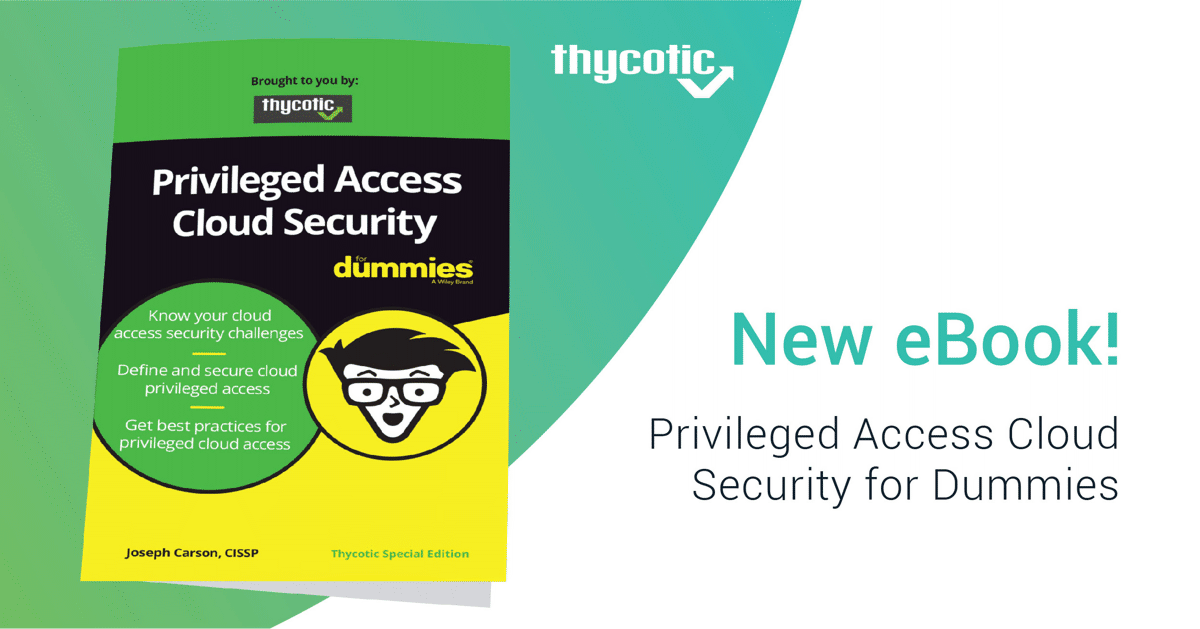Conversational Geek shows you how to contain the blast radius of a server attack
Cybersecurity insiders love jargon. The language in most cybersecurity whitepapers and webinars is just as tangled and opaque as legacy tech in a typical IT environment.
That’s why it’s no wonder cyber leaders have such difficulty building a common understanding with other technical teams, business users, and company leadership. It’s also no wonder many people new to cyber don’t know where to start or how to adapt to changing situations.
When you’re trying to fix what I’ll call a “bleeding neck” challenge, you have no time to waste.
Protecting your servers in the age of the cloud is one of those challenges. It needs clear advice, with no equivocation.
That’s why I’m excited to share Conversational Geek’s latest eBook on server privileged access management (PAM). Server PAM protects servers from breaches, ransomware, and insider abuse through granular, automated access controls.
Penned by cyber geeks with extensive experience, this eBook is easy to read and gives you a clear, foundational understanding of server access security. You’ll be able to share the lessons in the book with the rest of your IT team and your organization at large to fortify your server defenses.
Why focus on server access security?
Servers host juicy data that attackers want to exfiltrate or encrypt for ransom. They also create connection points across an IT network, so gaining access to one server can unlock access to all.
Lateral movement across servers is an Achilles heel for many organizations. Through lateral movement, attackers can locate their payload, avoid detection, escalate privileges, and persist even if detected on the initial point-of-access system.
Advanced Persistent Threats (APTs) use lateral movement, making them more difficult to defend against than simplistic attacks of the past. Security practitioners struggle to combat data breaches and ransomware attacks that habitually milk this tactic.
In most organizations, servers aren’t as secure as they should be. Native Linux and Windows server hardening is limited. Plus, server security challenges have been exacerbated by digital transformation and the COVID pandemic. The work-from-home and cloud migration dynamics that have re-shaped business have also re-shaped cyber requirements. Servers require secure remote access by distributed IT teams and the third parties that support them.
The problem is, firewalls and related networking defenses don’t match the reality of remote access, especially with servers that live in the cloud. You can no longer rely upon an outdated "inside" and "outside" paradigm to guide access control decisions.
If server access is broad and persistent, there’s too much scope for attack
As the eBook outlines, server access management must be granular and automated, with continuous monitoring and identity and privilege checks at every access point.
Server PAM removes implicit trust for privileged access by implementing the principle of least privilege, following a zero-trust approach. Instead of providing standing privileges to all users, PAM policies provide users with low levels of privilege until their work requires additional access. It eliminates the "keys to the kingdom" privileged accounts or stores them in a digital vault for break-glass, emergency use only.
Privilege elevation controls on the server provide just-in-time, just-enough privileges
With Server PAM, can administrators get more privileges to do legitimate work? As Conversational Geek explains, they sure can. With policy-based approvals, under controlled conditions, privileges are elevated and then expire automatically when no longer needed.
Modern PAM capabilities such as continuous monitoring, anomaly detection, and identity challenges at all major privileged access gates add layers of security to prevent lateral movement and break the attack chain.
In this manner, Server PAM allows servers to harden themselves.
Server PAM forces attackers out of stealth mode
An attacker with a stolen credential masquerading as a legitimate user isn’t guaranteed success. One of the benefits of server PAM, Conversational Geek explains, is that even if an attacker does access a server, the blast radius is contained since the stolen account privileges are low by default.
Putting hurdles in the path of an attacker or malware disrupts their plan. Forcing them to change course can result in unwanted noise and attention, leading to detection.
Learn more about server security from the straight-talking cyber pros at Conversational Geek.
You'll walk away armed to drive a more robust security agenda and better protect your organization.

FREE EBOOK
Servers are targeted by cybercriminals looking to exploit weaknesses in your server security


